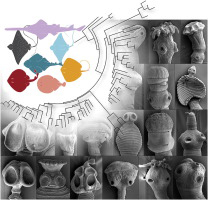 Just published: Jensen, K., J.N. Caira, J.J. Cielocha, D.T.J. Littlewood & A, Waeschenbach. 2016. When proglottids and scoleces conflict: phylogenetic relationships and a family-level classification of the Lecanicephalidea (Platyhelminthes: Cestoda). International Journal for Parasitology 46: 291–310. pdf
Just published: Jensen, K., J.N. Caira, J.J. Cielocha, D.T.J. Littlewood & A, Waeschenbach. 2016. When proglottids and scoleces conflict: phylogenetic relationships and a family-level classification of the Lecanicephalidea (Platyhelminthes: Cestoda). International Journal for Parasitology 46: 291–310. pdf
The abstract reads: This study presents the first comprehensive phylogenetic analysis of the interrelationships of the morphologically diverse elasmobranch-hosted tapeworm order Lecanicephalidea, based on molecular sequence data. With almost half of current generic diversity having been erected or resurrected within the last decade, an apparent conflict between scolex morphology and proglottid anatomy has hampered the assignment of many of these genera to families. Maximum likelihood and Bayesian analyses of two nuclear markers (D1–D3 of lsrDNA and complete ssrDNA) and two mitochondrial markers (partial rrnL and partial cox1) for 61 lecanicephalidean species representing 22 of the 25 valid genera were conducted; new sequence data were generated for 43 species and 11 genera, including three undescribed genera. The monophyly of the order was confirmed in all but the analyses based on cox1 data alone. Sesquipedalapex placed among species of Anteropora and was thus synonymized with the latter genus. Based on analyses of the concatenated dataset, eight major groups emerged which are herein formally recognised at the familial level. Existing family names (i.e., Lecanicephalidae, Polypocephalidae, Tetragonocephalidae, and Cephalobothriidae) are maintained for four of the eight clades, and new families are proposed for the remaining four groups (Aberrapecidae n. fam., Eniochobothriidae n. fam., Paraberrapecidae n. fam., and Zanobatocestidae n. fam.). The four new families and the Tetragonocephalidae are monogeneric, while the Cephalobothriidae, Lecanicephalidae and Polypocephalidae comprise seven, eight and four genera, respectively. As a result of their unusual morphologies, the three genera not included here (i.e., Corrugatocephalum, Healyum and Quadcuspibothrium) are considered incertae sedis within the order until their familial affinities can be examined in more detail. All eight families are newly circumscribed based on morphological features and a key to the families is provided. Aspects of morphological evolution and host associations are discussed in a phylogenetic context for each family and for the order as a whole. Lecanicephalidean genera lacking apical structures were confirmed as the earliest diverging lineages. Proglottid anatomy was determined to be much more conserved and indicative of phylogenetic affinities than scolex morphology. Collectively, the Lecanicephalidea parasitize three of the four orders of Batoidea—their almost exclusive absence from skates (Order Rajiformes) appears to be real; only a few records from sharks exist. At the family level, the breadth of host associations is correlated with taxonomic diversity of the family. The degree to which factors such as intermediate host use or host specificity at any stage in the life-cycle shape these patterns is currently unknown.
 Just published: Jensen, K., J.N. Caira, J.J. Cielocha, D.T.J. Littlewood & A, Waeschenbach. 2016. When proglottids and scoleces conflict: phylogenetic relationships and a family-level classification of the Lecanicephalidea (Platyhelminthes: Cestoda). International Journal for Parasitology 46: 291–310.
Just published: Jensen, K., J.N. Caira, J.J. Cielocha, D.T.J. Littlewood & A, Waeschenbach. 2016. When proglottids and scoleces conflict: phylogenetic relationships and a family-level classification of the Lecanicephalidea (Platyhelminthes: Cestoda). International Journal for Parasitology 46: 291–310. 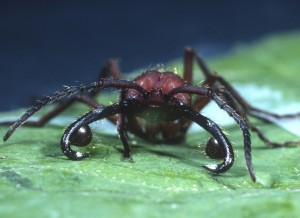 The recent award by NSF in support of the unique Army Ant Guests collection assembled by Carl and Marian Rettenmeyer over 50 years and now housed in the Biodiversity Research Collection is featured in
The recent award by NSF in support of the unique Army Ant Guests collection assembled by Carl and Marian Rettenmeyer over 50 years and now housed in the Biodiversity Research Collection is featured in 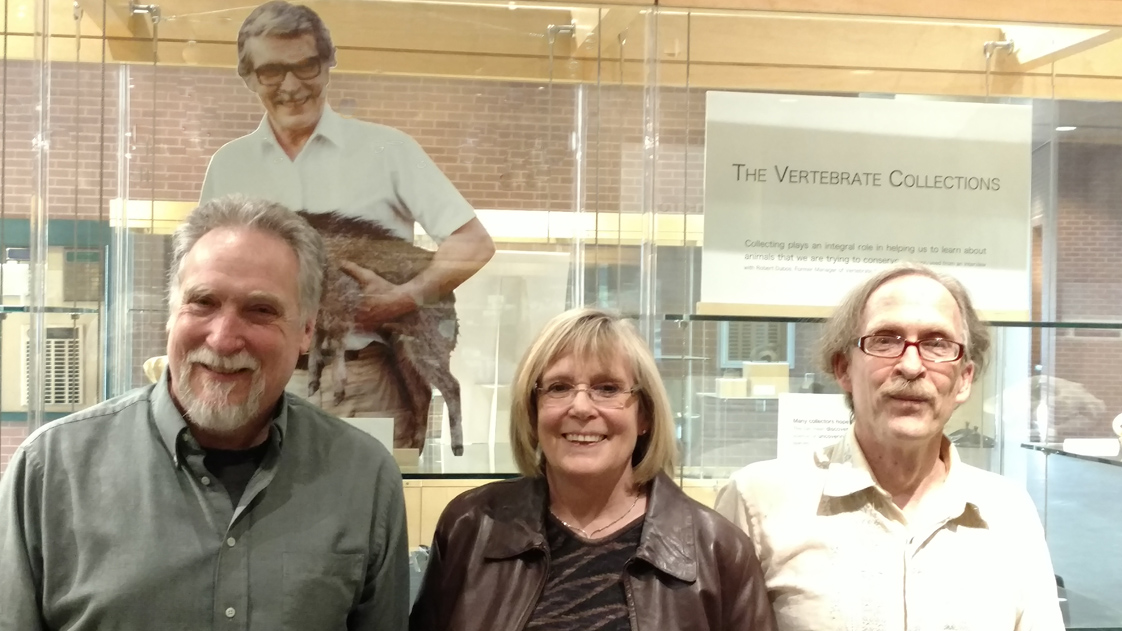
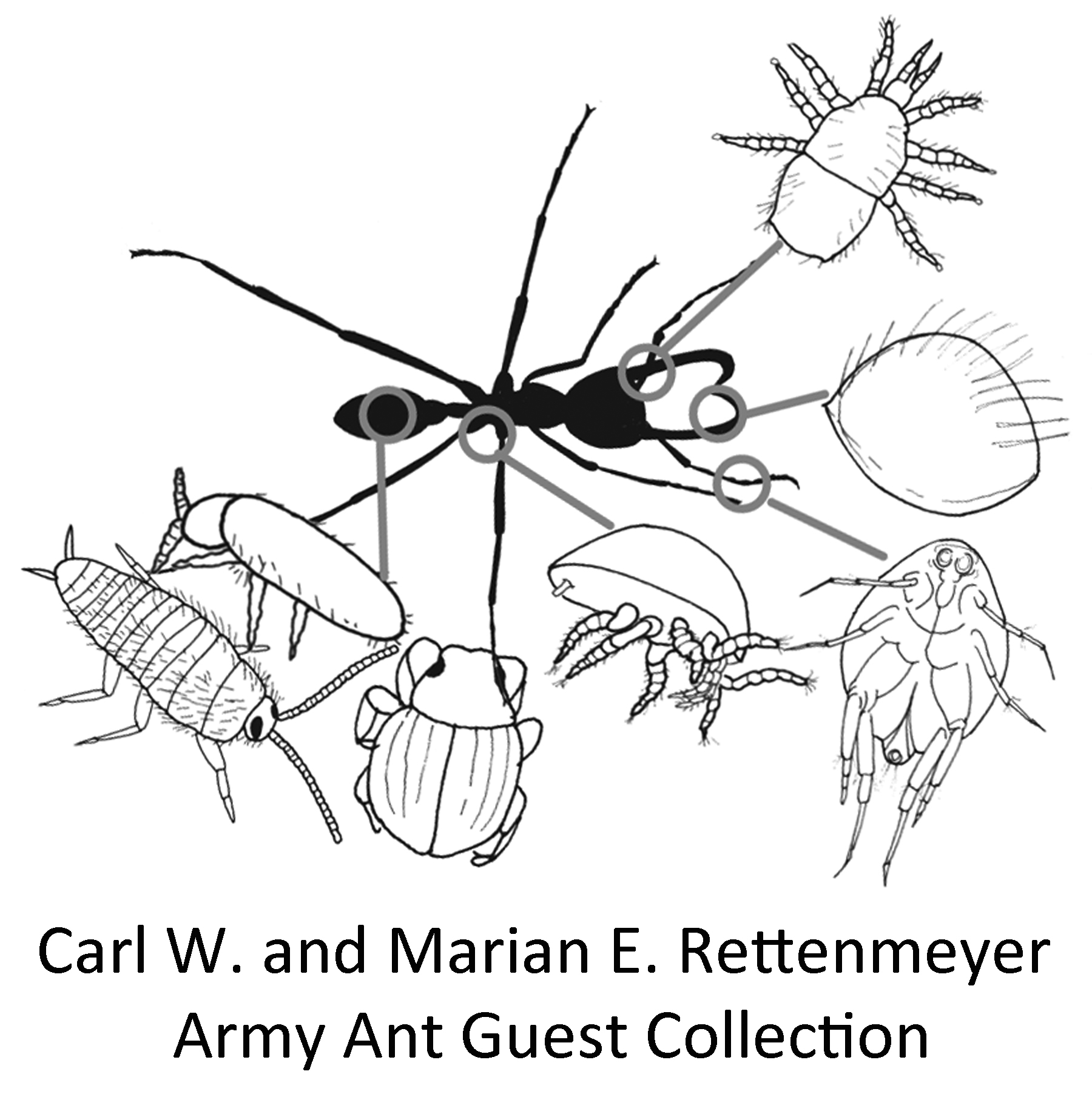

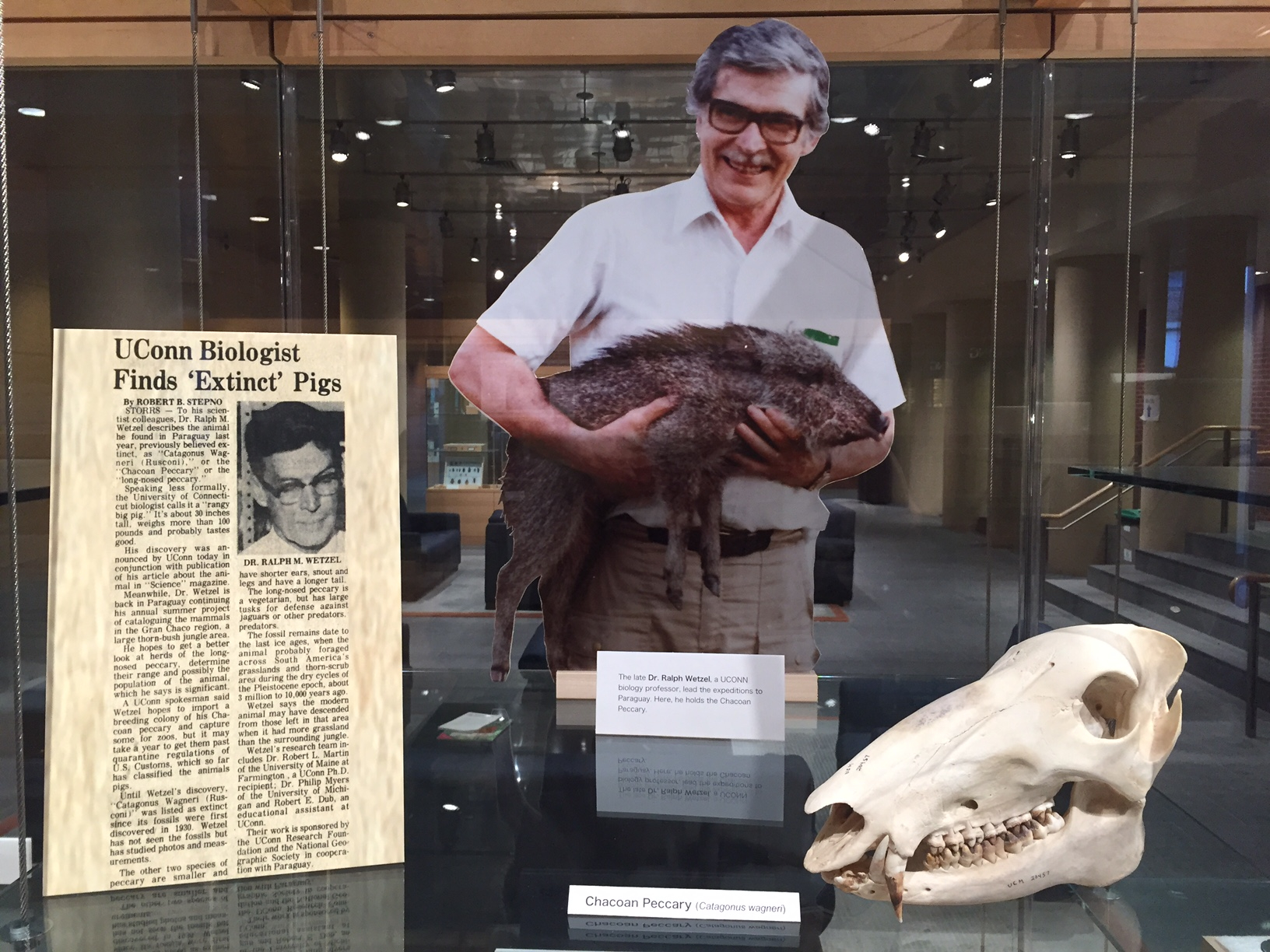 On Thursday 4/14, starting at 3, the Department of Ecology and Evolutionary Biology, and more specifically the Biodiversity Research Collections, is hosting a reception in the Biology Physics atrium, honoring the career of mammalogist
On Thursday 4/14, starting at 3, the Department of Ecology and Evolutionary Biology, and more specifically the Biodiversity Research Collections, is hosting a reception in the Biology Physics atrium, honoring the career of mammalogist